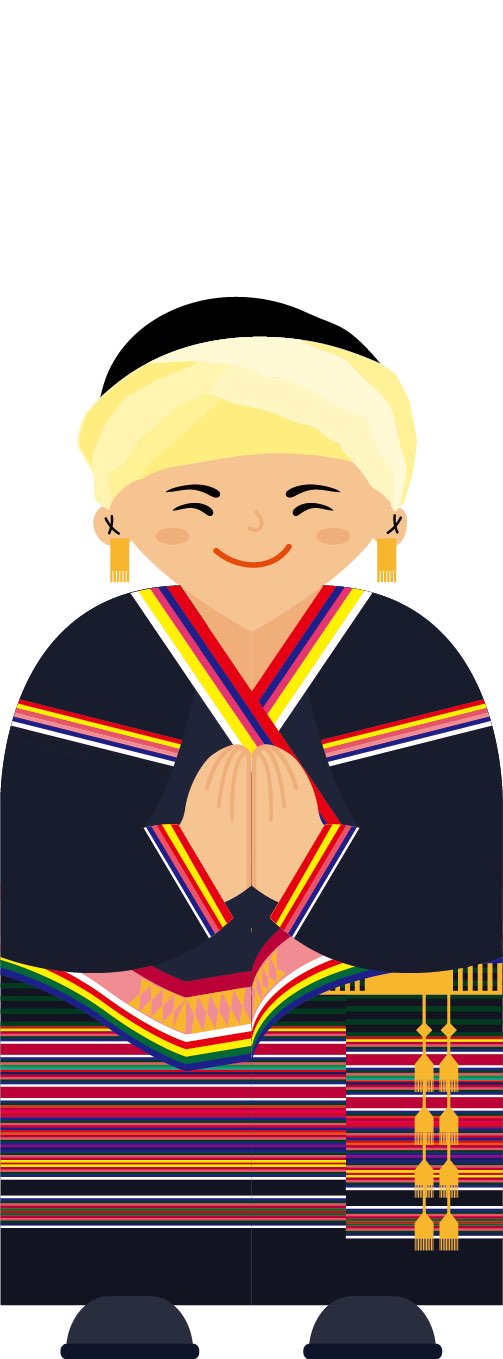
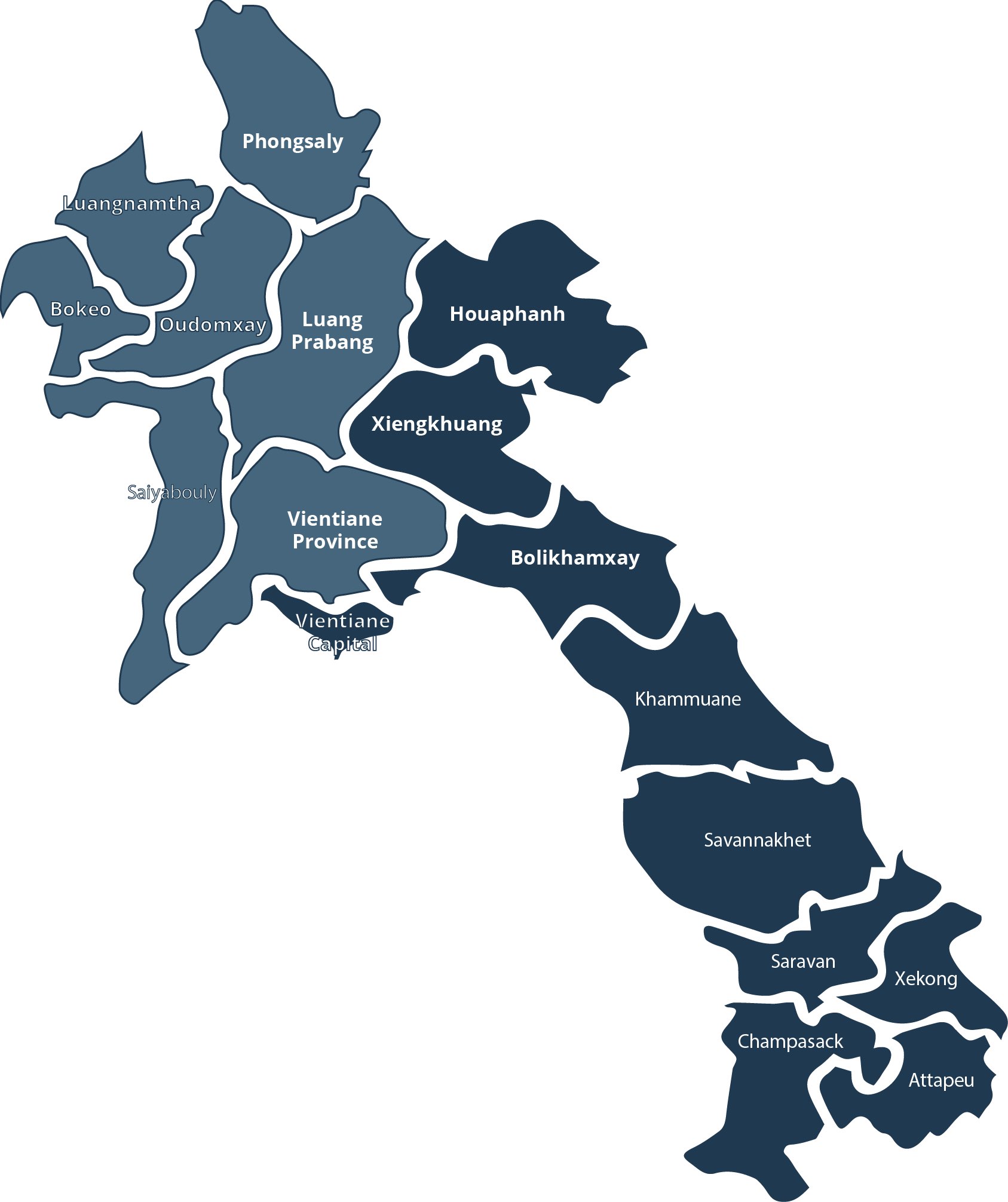
The Lue originally came from Kwangtung province of China. They migrated through Vietnam into Yunan province and into northern Laos around the thirteenth century. The majority of Lue lives in Phongsali, Luangnamtha, Bokeo, Udomsai, Saiyabury, and Luangprabang province. Today, there are still Lue living also in China, Burma, Vietname and Thailand. The population of Lue in Laos numbers 119, 199. A little more than half are women.
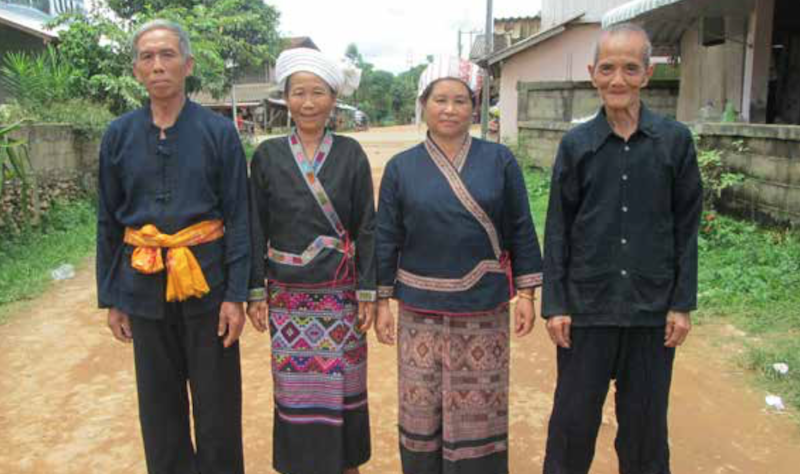
The Lue adopted Theravada Buddhism in the fourteenth century. However, they still mix in their own brand of animism where they believe in the spirits of nature and the household. They believe life is controlled by many spirits, most of them malevolent. The spirit of the township (Phi muang) is the most feared and most powerful. The villagers pay respect to this spirit by building a spirit house near the village and offering sacrifices such as pigs and chickens.
The Lue have clans (sing) that takes the names of animals, such as the Tiger clan or the Bird clan. Member of each clan must assist all members of the same line when they need help or have troubles in their lives. It is also forbidden to kill or eat the animal or plant that represents one’s clan.
New Years is a very important time of celebration for the Lue. They will make offering to the spirits, such as sacrificing buffaloes and pigs. This may go on for three to seven days, and during this time no outsiders may enter the village. The also spend this time to make merit for those who have passed away.
The Lue traditionally practice monogamy. Traditionally, polygamy was practiced among the wealthier members of society, but that tradition is fading. Young people are free to choose their future mate. Once married, they live in nuclear family ethnic group, but will occasionally intermarry with the Lao, Tai Nua, and Yuan, plus the other Tai groups. Mother give birth in the house. The umbilical cord will be buried in the ground. Mothers must refrain from eating certain foods for sometimes after giving birth.
When someone dies, the body is placed in a coffin and a ceremony is held. The coffin is later taken to the cemetery and burned on a pyre. Traditionally, there were certain funeral protocols that had to be followed depending on who died. The kind of ceremony was dictated by if the person was rich or poor, adult or minor, or a victim of violent death. If a young child dies, they are not cremated, but buried in a grave.
The Lue produce mostly glutinous rice at their main crop. They also grow corn, tobacco, cotton, fruits, and wide range of vegetables. They raise buffaloes, pigs, poultry, and some cattle. They are very skilled in crafts. Men are skilled silversmiths and can also make very nice baskets of woven bamboo. The women are known for their weaving and sewing, making sarongs, handbags, pillow covers, and many other items. Some women are involved in traditional paper making using mulberry bark.
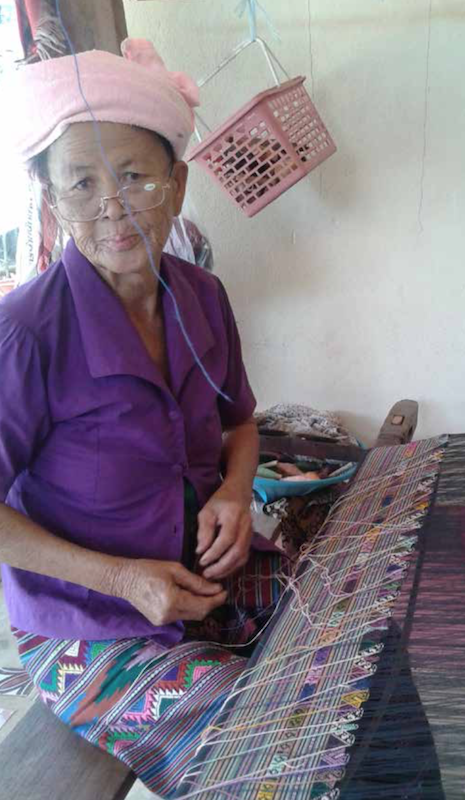
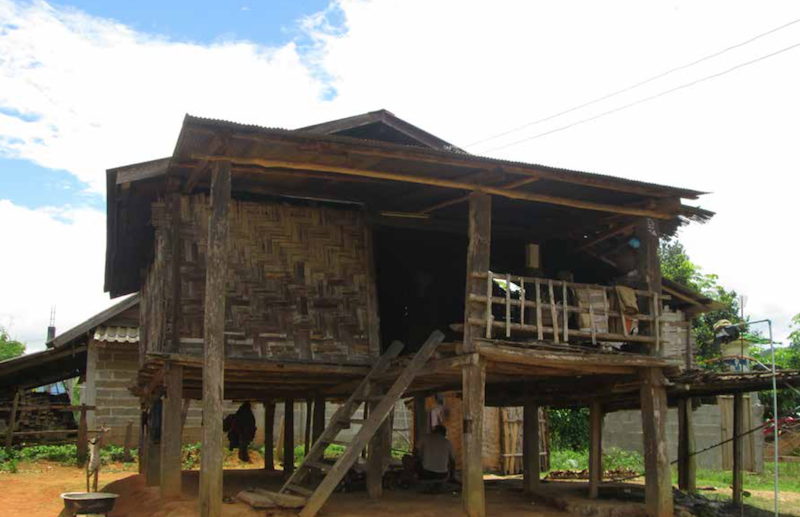
The Lue have settled in the lowlands, at altitudes between 150 and 400 meters. They like to be near water for their farming. Their villages are neatly arranged and tidy, and range from 40 to 250 houses per village. The houses are built on wooden poles. The walls are made of woven bamboo and have thatched roofs. There is a covered verandah in the front that has a ladder leading to the ground. There is a large living room with a kitchen in the corner, and a small area is partitioned off for sleeping. There is an altar in the house where offerings are given to ancestors and spirits. Every Lue village also has a temple. The walls inside are often decorated with murals depicting Lue life in the past.
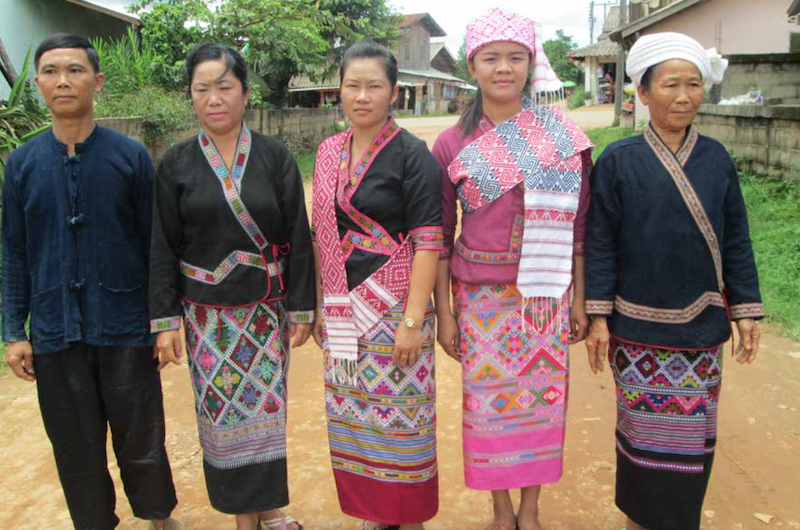

Lue women will wear a sarong of dark blue or black that is woven with numerous colorful designs. With this they wear long-sleeved jackets and loose blouses. They also wrap a colorful cloth around their head, covering their hair. The women wear silver jewelry, which will be etched with patterns of birds, butterflies and flowers. Men’s traditional dress consisted of a short jacket, trousers, and a turban. The jacket is similar to the women’s, and the trousers are bell-bottomed and are embroidered with bands of red, white, and yellow along the hems.
The official name is Lue. This is the name they prefer to be called. Alternative names include Dai, Pai-yi, and Lao Lue. The language is an Austro-Asiatic language, and is in the Mon-Khmer group. There is a written script, but very few young Lue today know the script.
Source: ປື້ມບັນດາຊົນເຜົາໃນ ສປປ ລາວ
Copyright © 2024. Her Works